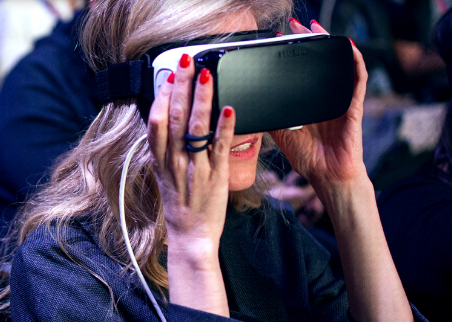
After more than 40 years of operation, DTVE is closing its doors and our website will no longer be updated daily. Thank you for all of your support.
VR and AR headset shipments to grow ten-fold
 Virtual and augmented reality headset shipments will grow nearly ten-fold between 2016 and 2021 according to research firm IDC.
Virtual and augmented reality headset shipments will grow nearly ten-fold between 2016 and 2021 according to research firm IDC.
The International Data Corporation (IDC) Worldwide Quarterly Augmented and Virtual Reality Headset Tracker claims that total headset device shipments will reach 99.4 million units in 2021, up from 10.1 million in 2016.
This represents a compound annual growth rate of 58% across the five-year forecast period as new device launches, more content for consumer and enterprise users, and lower prices drive the market forward “at a breakneck pace”.
Ramon Llamas, research manager for IDC’s Augmented and Virtual Reality team, said that 2016 marked “an important step for the AR and VR headset market with product finally arriving in end users’ hands and on their heads.”
“While there was clear demand coming primarily from technology enthusiasts, what became readily apparent were the use cases for enterprise users across multiple verticals and for consumers with gaming and content consumption.
“This sets the stage for the multiple aspects of the market that device makers, platforms and content providers, and developers will be addressing in the months and years to come.”
IDC predicts that the value of AR headsets will grow from US$209 million in 2016 to US$48.7 billion in 2021. Meanwhile, VR headsets will grow from US$2.1 billion in 2016 to US$18.6 billion in 2021.
“VR setups already range from sub-$100 to more than $1000 and though it’s too early to tell, the low-cost experiences may prove to be inhibitors rather than promoters of the technology as they can potentially disappoint first time VR users,” said IDC senior research analyst, Jitesh Ubrani.
“On the other hand, due to the sophistication of the hardware, most AR headsets are expected to cost well over US$1000. This makes the technology far less accessible to consumers initially, though that’s probably for the best as the AR ecosystem and wide social acceptance are still a few years away.”
Separately, a recent Strategy Analytics report on Virtual Reality claimed that current VR experiences “lack the context required for real engagement with the medium”.
The study claimed that growth in the VR market will be driven by the creation of compelling experiences that allow the user to “experience, preview, and escape reality”.
“Early adopters of VR are predominantly gamers who are driven to the medium by the promise of ‘being there’. However, the biggest risks to the nascent VR market are the lack of context, the lack of social capabilities and the hard-wired headset restricting player movement,” according to the report.


